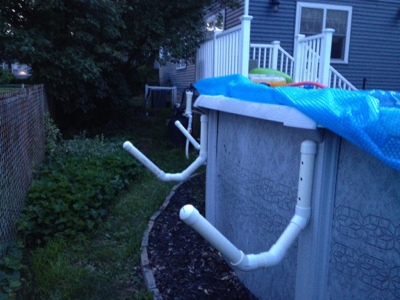This weekend I began creating a fireplace mantel. I've never done this before and I was a little worried about creating it. My wife and I wanted the mantel to be made out of a hardwood like cherry. Years ago I made an end table for the room out of cherry and liked the look of the wood. When I started to calculate how much the mantel would cost out of cherry I got even more worried. I toyed with the idea of making it out of pine first as I saw a woodworking show do that. It would have allowed me to work through any kinks and cut down on mistakes. I didn't go that route just for the sake of time.
I started by drawing up a few designs for the mantel profile. I knew I wanted a cove detail. Once I found a design I liked, I knew I would have to mill the cherry myself. No way was I going to pay some lumber company to mill the wood into moulding; that would cost a fortune.
For the cherry I used on the end table I went to Pittsford Lumber. They have a great facility, every wood species imaginable. A few months ago a friend told me about another place he uses for work, Lakeshore Hardwoods in Victor. I got their website up and found their price list for wood. They were two dollars per board feet cheaper.
Lakeshore Hardwoods had a very good selection of wood. It was clean and organized. As it turned out, for shorter lengths the price per board foot was lower. I purchased 5/4 x 10 x 60 for the actual mantel and 5/4 x 7 x 24 for the moulding. Looking back I should have just purchased another longer board but it was my first time. All the cherry was rough cut so I had to run it all through my planer. I planned it down to 1 inch thick and it came out beautiful.
Next I purchased a half inch cove bit for my router. That bit ran me $30 but I made all of the moulding for this project. $30 might have covered one board made out of the cherry. Doing it myself I could cut the thickness of the moulding to what I needed.
It took me a little over three hours to build but our mantel is almost finished. Next is the finishing. Filling nail holes, sanding sealer, sanding, a light stain and then wax. It should be nice for years to come.
The bookshelves are next!


































